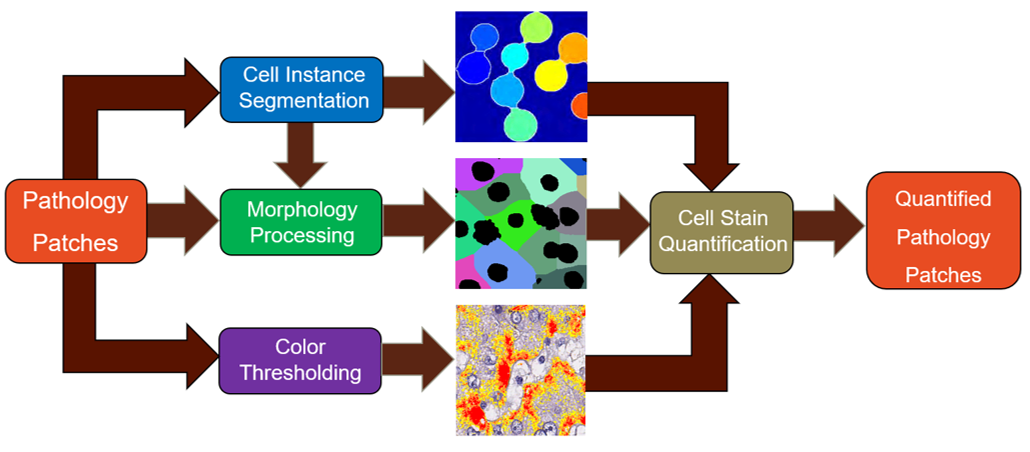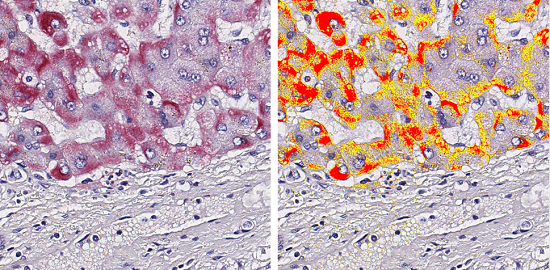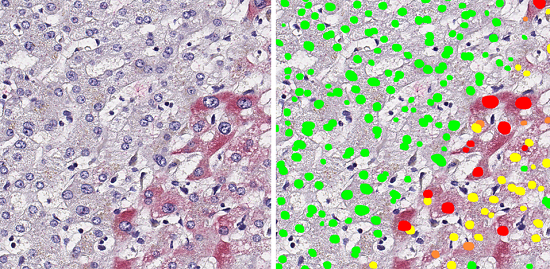| Technical Name | 免疫組織化學染色肝臟切片量化分析 | ||
|---|---|---|---|
| Project Operator | National Cheng kung University | ||
| Project Host | 詹寶珠 | ||
| Summary | "The IHC staining intensity grading algorithm combines a series of complementary processes of deep learningimage processing in order to overcome the difficulties in cell boundary segmentationgrade definition,provides a cell-based IHC staining intensity gradingquantification capability. The proposed method serves as a useful assistive tool for physicians in performing accurate staining quantification in tissue microscopic images. In addition, it analyzes panoramic pathological images in order to determine the factors most strongly associated with likely disease recurrence." |
||
| Scientific Breakthrough | This method develops an IHC auxiliary analysis system for liver pathological images, which captures the staining intensity information of each cell through a visual step-by-step process. The algorithm provides accurate quantitative information of cell grade staining for doctors’ referencealso can visualize the outcome of each step for doctors' inspection, thereby improving the credibility of the results. In addition, statistical analysis techniques are employed to highlight the most important factors associated with disease recurrenceformulate corresponding prediction equations. |
||
| Industrial Applicability | At present, the statistics of the staining parameters of stained sections are determined manually by pathologists under the microscope. However, this is not only time-consumingtedious, but also subjectivedependent to a large extent on the pathologist's experience. Therefore, we proposed herein realizes an automated IHC auxiliary analysis system, which can grade the expression of the staining sections, provide more accurate diagnosisanalysis of hepatitis, reduce the burden on doctors,assist doctors to implement accurate medical diagnosispostoperative treatment planning. |
||
| Matching Needs | 天使投資人、策略合作夥伴 |
||
| Keyword | Pathology Aid System Pathology Whole Slide Image Liver Pathology Immunohistochemistry Staining Hepatitis B Surface Antigen Instance Segmentation Deep Learning Image Processing Color Space Conversion Stain Intensuty Quantification | ||
- pcchung@ee.ncku.edu.tw
other people also saw







